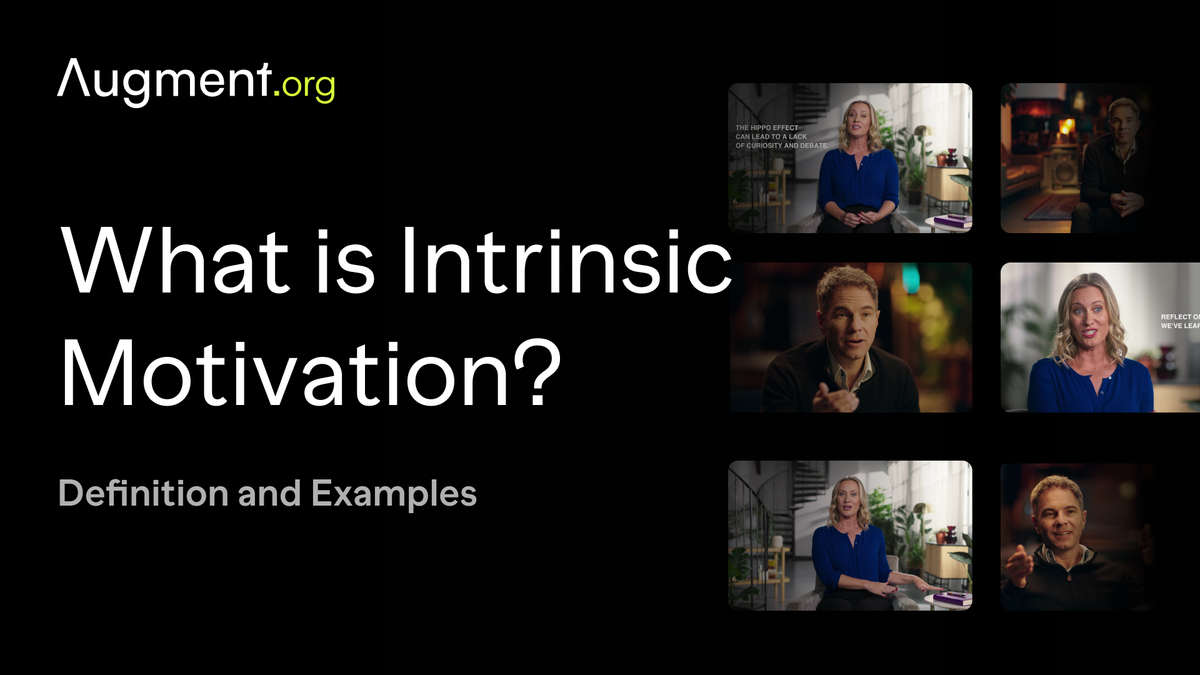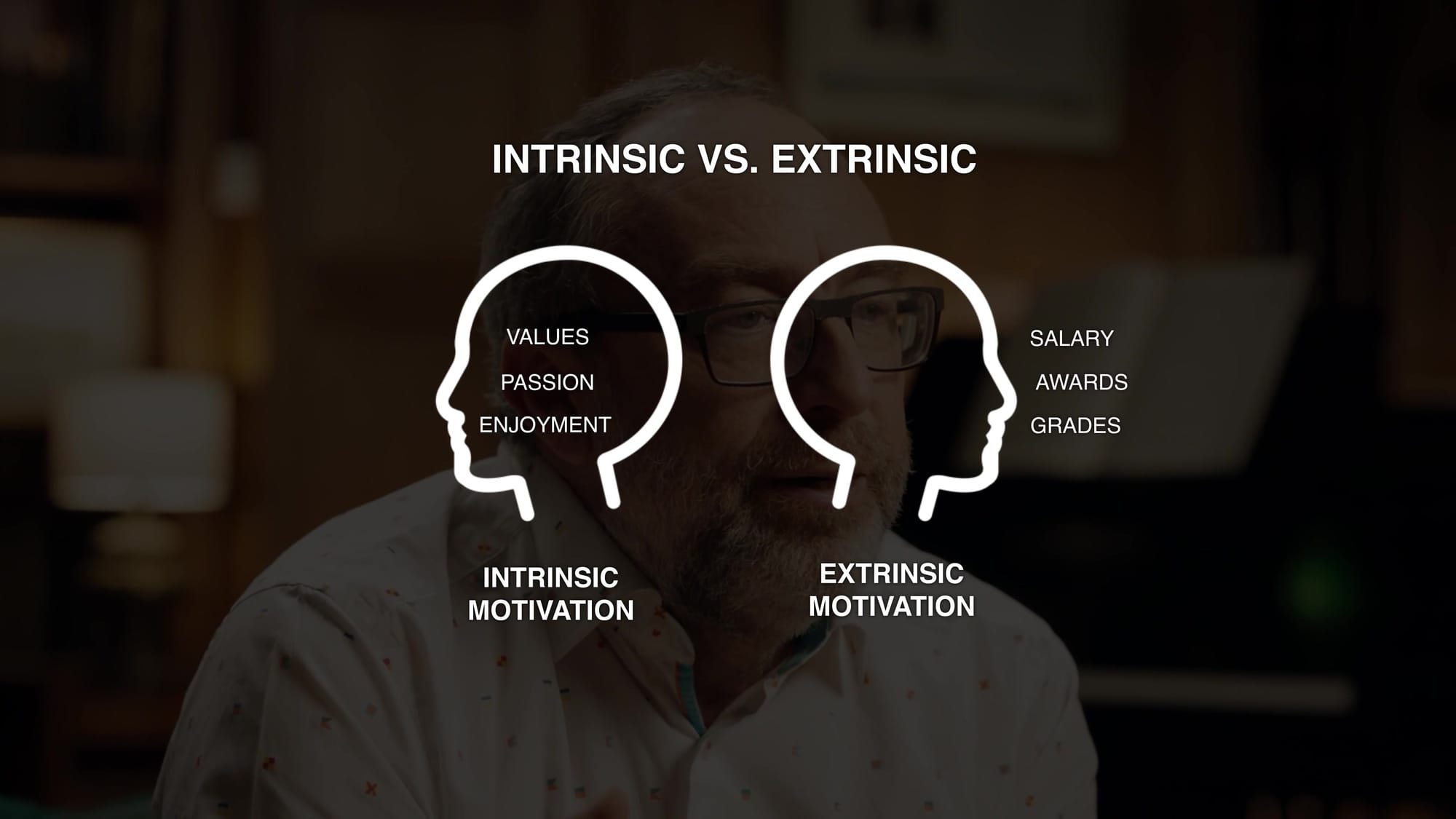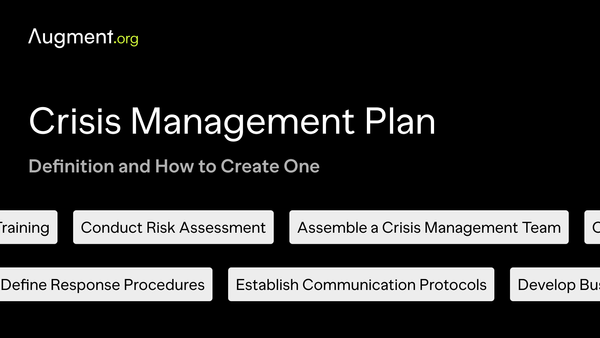What is Intrinsic Motivation? Definition and Examples
Intrinsic motivation powers our drive to act for the sake of personal satisfaction and internal rewards. Learn about the dynamics of intrinsic motivation and explore how it shapes our choices and behaviors.

What is Intrinsic Motivation?
Intrinsic motivation is the internal drive that prompts people to engage in tasks for their own sake, powered by internal rewards rather than external pressures. It’s what fuels individuals to pursue interests and activities that bring personal satisfaction and inherent satisfaction, such as learning a new skill simply because it's enjoyable.
This type of motivation is vital because it is intrinsically rewarding. It stems from fulfilling basic psychological needs and aligns with the self-determination theory, which suggests that human behavior is driven by the need for competence, connection, and autonomy. When intrinsically motivated, the journey itself is the reward, leading to behaviors that are self-initiated, driven by personal interest, and engaging for the sheer challenge and joy they bring.
How Does Intrinsic Motivation Work?
Intrinsic motivation operates through a set of psychological principles, mainly drawn from the self-determination theory proposed by Ryan and Deci. This theory outlines that intrinsically motivated behaviors arise from the satisfaction of basic psychological needs: autonomy, competence, and relatedness. Here’s how it works:
- Autonomy: When people feel they have control over their actions, they are more likely to be motivated from within. Choosing to tackle a project because it feels personally significant is an example of autonomy in action.
- Competence: This need drives us to seek mastery and improvement. When we feel competent, we are more likely to take on tasks that challenge us and thus are intrinsically motivating.
- Relatedness: The desire to connect with others and feel a sense of belonging can also fuel intrinsic motivation. Collaborating with a team on a meaningful task can meet this need.
Unlike extrinsic motivation, which is about external rewards or avoiding negative outcomes, intrinsic motivation is self-sustaining. It does not rely on external motivation or extrinsic rewards, such as money or praise. Instead, it's about the internal motivation that comes from the joy or fulfillment of the activity itself.
When intrinsically motivated, individuals engage in behavior for the inherent satisfaction and internal rewards it brings, not because of pressure from external motivations. This can lead to a more adaptive motivation system, where a person is continually motivated to pursue their interests and passions, often leading to innovation and personal growth.
What is the Impact of Intrinsic Motivation?
The impact of intrinsic motivation on both individuals and organizations is profound. When intrinsically motivated, people often achieve higher levels of creativity, quality, and satisfaction in their endeavors. Here's how intrinsic motivation makes a difference:
- Enhanced Learning and Performance: Intrinsically motivated individuals are more likely to embrace challenging tasks, enhancing their skills and mastering new competencies. This internal drive can lead to higher performance levels in various settings, from academic achievement to workplace productivity.
- Increased Well-being: Fulfilling internal motivations contributes to overall well-being and happiness. When people do things because they inherently enjoy them, they report higher levels of well-being.
- Resilience: Those who are intrinsically motivated are typically more resilient in the face of adversity. They're motivated by internal rewards and personal growth, which can help them bounce back from setbacks.
- Sustained Engagement: Intrinsic motivation is self-sustaining. Unlike external motivation, which can wane when external rewards are removed, intrinsic motivation can promote a long-term engagement in activities.
- Innovation: In workplaces, intrinsically motivated behaviors can lead to innovation and creativity. When employees are driven by internal satisfaction and curiosity, they are more likely to generate new ideas and solutions.
Intrinsic motivation, when fostered and encouraged, can lead to a more motivated, engaged, and satisfied individual or workforce. It can also help to create a positive feedback loop, where the joy derived from the activity itself perpetuates further engagement and effort.
What is Self-Determination Theory?
Self-Determination Theory (SDT) is a psychological framework for understanding human motivation. Developed by researchers Edward L. Deci and Richard M. Ryan, it suggests that people are motivated to grow and change by three innate and universal psychological needs:
- Autonomy: The need to feel in control of one's own behaviors and goals.
- Competence: The need to master challenging tasks and learn different skills.
- Relatedness: The need to feel connected to others and belong to a group.
These needs are considered essential for psychological health and well-being and are the foundation of intrinsic motivation. When these needs are met, we engage in activities out of interest and enjoyment, which is considered to be 'intrinsic motivation'. On the other hand, 'extrinsic motivation' is driven by external factors such as rewards or punishments.
SDT posits that intrinsic motivation is more effective and sustainable than extrinsic motivation. It can lead to deeper engagement, better performance, and greater well-being. In contrast, an over-reliance on extrinsic motivators like rewards or approval can undermine intrinsic motivation and diminish its positive effects.
In practice, SDT encourages environments that support an individual’s autonomy, competence, and relatedness needs. For example, teachers, employers, and parents can promote intrinsic motivation by offering choices, challenging tasks, and opportunities for collaboration. Understanding and applying the principles of self-determination theory can thus have a profound impact on personal growth, learning, and development.
Examples of Intrinsic Motivation in Daily Life
Intrinsic motivation is all around us, subtly influencing our daily activities. Here are a few examples of how it manifests in everyday life:
- Learning a New Hobby: Picking up an instrument or starting a garden because you're genuinely interested in the craft, not because you have to.
- Volunteering: Offering time at a local charity or community center because it feels rewarding and aligns with personal values.
- Exercising: Going for a run or hitting the gym because of the enjoyment it brings or the personal challenge it represents, rather than just to look good.
- Reading: Choosing to read a book for the pleasure of learning something new or experiencing a different world through stories.
- Problem-Solving: Tackling puzzles or brain teasers because you love the process of finding solutions.
These activities are driven by an internal desire to engage in them for the personal fulfillment they provide. They are examples of intrinsically motivated behaviors that are inherently satisfying and do not rely on external rewards or recognition. Whether it's for the inherent satisfaction, a sense of accomplishment, or just for fun, intrinsic motivation is a powerful force that propels us to explore, learn, and grow.

Intrinsic vs Extrinsic Motivation
Intrinsic and extrinsic motivations are key drivers of human behavior, with each type playing a distinct role in how we act and decide.
Intrinsic Motivation is driven by internal rewards and personal satisfaction. It's when we do something for the sheer enjoyment or challenge, not for some external reward. Examples include reading a novel because you love the story or playing the piano because it brings you joy.
Extrinsic Motivation, on the other hand, involves completing a task or engaging in an activity for external rewards or to avoid negative outcomes. This could be working extra hours for a bonus, studying to get a good grade, or running a marathon to win a medal.
Both types of motivation are important, but they have different impacts on how we feel and perform:
- Intrinsic motivation tends to lead to more enjoyment and a deeper engagement with the task. It is linked to creativity and persistent behavior even in the absence of external rewards.
- Extrinsic motivation can be powerful, especially in the short term, but may undermine intrinsic motivation if overemphasized. It can lead to dependency on rewards or recognition, and once they're removed, motivation may decrease.
Understanding the balance between intrinsic and extrinsic motivation is crucial, particularly in environments like the workplace, where the right mix can lead to higher satisfaction and better outcomes.
Ryan and Deci's self-determination theory emphasizes the importance of intrinsic motivation for optimal functioning and growth. When we are intrinsically motivated, we engage in activities that are inherently interesting and fulfilling, promoting a positive cycle of continued learning and well-being.
How to Practice Better Motivation in the Workplace
Fostering intrinsic motivation in the workplace can lead to a more engaged, productive, and satisfied workforce. Here are some strategies to encourage intrinsic motivation among employees:
- Offer Autonomy: Allow employees to have a say in how they do their work. This sense of control can increase their internal motivation and satisfaction.
- Encourage Mastery: Provide opportunities for professional development. When employees feel they are improving and excelling at their tasks, their intrinsic motivation can soar.
- Connect to a Purpose: Help employees see the bigger picture and how their work contributes to the company's goals and society. This connection can enhance their internal motivation.
- Provide Positive Feedback: While not relying solely on extrinsic rewards, positive feedback can affirm employees' competence, supporting their intrinsic motivation.
- Cultivate a Supportive Environment: Create a workplace culture that values collaboration and support, which can fulfill employees' basic psychological need for relatedness.
- Set Intrinsically Motivating Goals: Encourage goal-setting that aligns with employees' interests and passions, which can be inherently satisfying to pursue.
- Minimize Overemphasis on Extrinsic Rewards: While extrinsic rewards like bonuses are important, they shouldn't overshadow the inherent satisfaction of the work itself.
By integrating these practices, companies can help employees tap into their intrinsic motivation, leading to a more dynamic and fulfilling workplace. This approach aligns with self-determination theory and can result in intrinsically motivated behaviors that benefit both the individual and the organization.



